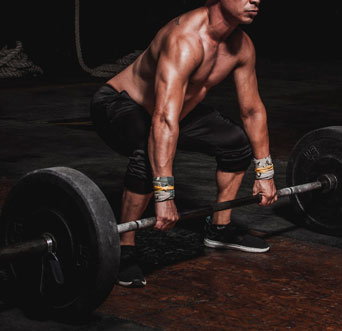In the world of strength training and weightlifting, athletes and fitness enthusiasts are constantly seeking ways to enhance their performance and safety.
One key innovation that has gained popularity in recent years is the lifting platform. These platforms serve as a crucial piece of equipment in gyms, sports facilities, and even home setups, offering a range of benefits for those engaged in weightlifting and strength training activities.
The Anatomy of a Lifting Platform
A lifting platform is typically a raised, sturdy surface designed to provide a stable foundation for weightlifting exercises. It consists of several key components:
- Rubber Matting: The top surface of a lifting platform is usually covered with a thick layer of high-quality rubber matting. This rubber provides a non-slip, shock-absorbing surface that protects both the lifter and the equipment. It helps reduce the impact on joints and minimizes the chances of weights bouncing or rolling away during lifts.
- Wooden Base: Beneath the rubber matting, there is usually a wooden base made from layers of plywood. This base provides additional shock absorption and stability, further enhancing the lifter’s experience.
- Frame: Lifting platforms are typically surrounded by a sturdy frame, often made of steel, to protect the edges of the platform and add to its durability.
Benefits of Lifting Platforms
Lifting platforms offer a wide range of advantages for weightlifters and strength trainers:
- Safety: Safety is paramount in weightlifting. Lifting platforms provide a secure surface that reduces the risk of injury due to slips, falls, or dropped weights. The shock-absorbing properties of the rubber matting also protect joints and equipment.
- Noise Reduction: Dropping heavy weights can produce loud and distracting noises in a gym or training area. Lifting platforms absorb much of this impact, significantly reducing noise levels and creating a more pleasant workout environment.
- Equipment Protection: Weightlifting platforms help prolong the lifespan of barbells and weight plates by preventing them from coming into direct contact with hard surfaces. This reduces wear and tear on equipment.
- Improved Performance: The stable and non-slip surface of a lifting platform allows lifters to focus on their technique and form without worrying about balance or footing issues. This can lead to improved performance and better results.
- Versatility: Lifting platforms are versatile and can be used for various exercises, including deadlifts, power cleans, snatches, and squats. They are suitable for Olympic weightlifting, powerlifting, and functional fitness workouts.
- Professional Look: Gyms and sports facilities often invest in lifting platforms not only for their functional benefits but also for their professional appearance. A well-maintained lifting platform can enhance the overall aesthetics of a training space.
Conclusion
In the world of weightlifting and strength training, the introduction of lifting platforms has revolutionized the way athletes and fitness enthusiasts approach their workouts.
These platforms offer safety, durability, and versatility, making them an essential piece of equipment for anyone serious about their training.
Whether you’re a seasoned weightlifter or just starting your fitness journey, consider incorporating a lifting platform into your routine to experience the benefits firsthand.
With the right platform beneath your feet, you can lift with confidence, push your limits, and achieve your fitness goals safely and effectively.




